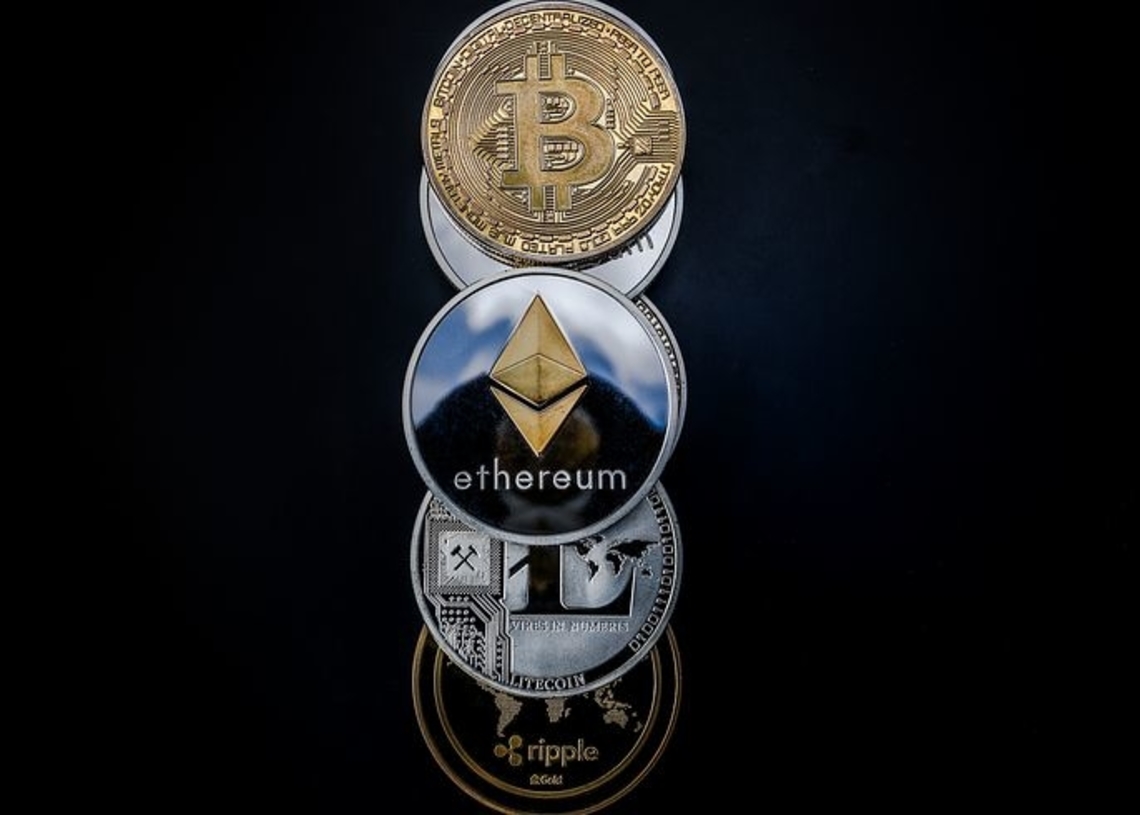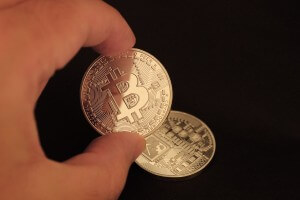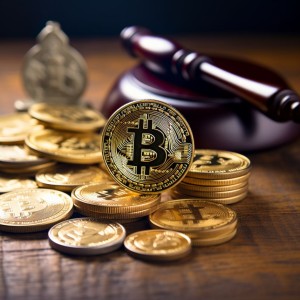TL;DR Breakdown
- Stablecoins are cryptocurrencies.
- The crypto assets are pegged to either fiat currencies, commodities and even other cryptocurrencies.
- Tether, Binance USD, Gemini Dollars, CACHE gold are notable examples of stablecoins.
One major fear of investors about the crypto industry is its highly unpredictable nature. One minute, they are sitting on a crypto asset that is worth thousands, and the very next, they are wondering why they bought the asset whose value has plummeted beyond recognition.
With this realization, many investors have remained very reluctant due to the crypto industry’s high level of uncertainty. Nobody wants to lose their hard-earned money to circumstances they believe should be in their control. So the idea of a crypto asset that remains stable regardless of any market happenings was born.
The first Stablecoin was issued in 2014 with BitUSD and NuBits as groundbreakers. While both assets are still in existence, they have somewhat faded off the radar, especially with the emergence of projects like Tether, Gemini Dollar, and Facebook-backed Libra’s entrance, which is now known as Diem.

The tech giant’s entrance into the field drew more attention to this subsector of the crypto industry as erstwhile finicky retail investors found a way to invest in the crypto space with a renewed confidence level.
The multimillion question some are still trying to answer is, “what exactly are Stablecoins?” We would seek to provide answers below.
What is a stablecoin?
Stablecoins are primarily cryptocurrencies but not the same as Bitcoin or Ethereum. The latter mentioned assets are prone to fluctuations in value, which makes it impossible for an average individual to use or invest in.
If stablecoins are cryptocurrencies, but they are unlike BTC and Ether, what exactly are they? Well, from its name, one should get the answer to that question.
Stablecoins are cryptocurrencies that their values are tied or pegged against an external asset. This external asset may be a fiat currency or commodities like gold, oil, or even gas.

In essence, the value of a Stablecoin remains stable and steady as a reserve asset backs them. This way, the high level of volatility associated with the crypto market is reduced to the barest minimum, negating the industry’s speculative nature. Thie idea is that Stablecoins would lead to more crypto adoption and a reliable and consistent crypto market is created.
An investor who holds a Stablecoin enjoys a hybrid of the conventional financial system and the new crypto industry. This investor would be able to carry out transactions while enjoying the security, privacy, and swiftness associated with the crypto world with an asset-backed by either a fiat currency or valuable commodity that is free of the volatility attached to the general crypto industry.
Thus, regardless of the type of Stablecoin, one is holding, they always would have these characteristics:
- Some level of reserve or security backs them.
- Their supply is always controlled.
- Their prices remain stable and fixed to whatever asset is backing them.
What keeps them stable?
We have been able to establish that the value of stablecoins remains stable regardless of any activity in the crypto market. And we know that the assets can do this because it has been pegged to an underlying external asset. But how do these assets maintain their stability still?
Well, the answer to that is not far fetched. Stablecoins are very reliant on whatever fiat currency they might have pegged to, and this currency, in turn, depends on two primary keys to maintain its stability. They are:
Reserves
All fiat currencies in the world are pegged to an underlying asset that acts like its collateral. This underlying asset could be gold or forex reserves. The value of these collaterals helps make the value of these fiat currencies free from any swings or high volatility.
Timely market actions
Despite the underlying asset that a fiat currency is backed with, there are situations when a fiat currency’s value might act wildly; in cases like that, timely market actions from the authorities like central banks or governments help maintain the value of the currency.
These authorities would effectively manage the demand and supply of their fiat currency, thereby maintaining price stability.
Many crypto-assets generally lack these two reasons, which is why their prices are prone to swinging wildly. We know that the crypto market is decentralized, which means it is not subject to any authority or intermediary interference. There is no reserve backing their valuations too.
Stablecoin, on the other hand, is pegged to a fiat currency that has an underlying asset maintaining its valuation. This way, the asset’s value remains set in stone for a very long time to come.

Types of stablecoins
Stablecoins are of different types as there are various means of collateralizing a crypto asset. However, there are four methods of how these assets are collateralized. They are discussed below:
Fiat-backed Stablecoin
This is the most common type of Stablecoin. In this type, a Stablecoin is pegged directly to a fiat currency on a 1:1 ratio. The asset depends on this currency reserve to issue a number of its crypto assets at all times.
Fiat-backed stablecoins are also the most popular in the crypto market; they can be traded on exchanges and are redeemable from the issuer.
Commodity-backed stablecoins
It is almost similar to a fiat-backed Stablecoin. The only difference here lies in the fact that this type of Stablecoin is backed by commodities like gold, silver, or even commodities like oil and even gas.
Cryptocurrency-backed Stablecoins
Cryptocurrencies can also be used to back Stablecoins. However, in this case, a larger number of the crypto-asset would be held in collateral for each unit of a Stablecoin. Most crypto-backed Stablecoin often operate in a 1:2 ratio.
The reason for this is simple, the value of these crypto-assets could swing into extreme situations, and to avoid this affecting the supply of a Stablecoin, enough of these digital assets have to be held in collateral.
Due to the vast number of collaterals demanded here, it is highly unpopular, with some often calling it “over-collateralized.”
Algorithmic Stablecoin
Stablecoins in this category are called non-collateralized because they do not have the backing of any fiat currency or a commodity and even a cryptocurrency. Instead, these stablecoins depend on an algorithm to help them maintain their stability at all times.
Here, smart contracts play a pivotal role in maintaining the demand and supply of these assets. When the Stablecoin is trading too high, the system automatically generates new coins to act as collaterals for the assets. When the market operates in the opposite direction, the system buys off coins to cut down the supply.
The algorithm here acts as a regulatory body that looks to maintain price stability.
Some Popular stablecoins
Presently, there are over 200 stablecoins in the crypto market; here are a few of them:
Tether (USDT)
One of the most common Stablecoins is Tether. According to the crypto asset team, it is backed by real dollars that are under the control of a centralized third-party.
This allows investors to safely invest in the crypto space to assure that their tokens are worth a dollar.
Petro
Petro is a commodity-based crypto asset that was developed by the government of Venezuela. According to the country’s authorities, the Stablecoin is backed by the country’s oil reserve.
The idea behind the asset is to help the government combat the high inflation rate that afflicts their economic system—the success of this project has, however, been relatively limited.
Binance USD (BUSD)
Like Tether, this crypto asset also says it is a highly regulated 1:1 USD-backed crypto stablecoin. It is a token developed by Binance crypto exchange and has enjoyed comprehensive coverage and usage due to its developers’ team.
The firm effectively says its tokens are digitized US Dollars.
Another popular crypto asset is Gemini Dollar, which the Winklevoss twins developed in collaboration with Paxos and Coinbase. Another top Stablecoin is CACHE gold which has each unit backed by a gram of pure gold.
Dai token, on the other hand, is a crypto-backed Stablecoin. The token maintains its peg in the market through users who over-collateralize the Ethereum token asset that they can later redeem.
Advantages of stablecoins
Stablecoins pose quite a several advantages to investors and traders alike. Some of these advantages are:
Price Stability
The number one advantage stablecoins hold over every other crypto asset is that they ensure price stability. The value of its asset is not prone to the highs and lows of other assets in the crypto market.
This is why many investors in the coins believe them to be a safe-haven asset untouched by the volatility of the crypto industry and an ideal avenue to hedge against inflation and store wealth.
Secured, privacy and decentralized
You would notice that we called stablecoins a crypto asset simply because that is precisely what they are. Stablecoins are cryptocurrencies, and like every other crypto digital asset, it means they also share the same features like security, privacy, decentralization, cheap transaction fees, and a lot more.
Local and international Payments processing
The erstwhile acting comptroller of the Office of the Currency, Brian Brooks, recognized the potential Stablecoin had in processing payments that he had to write a letter where he stated that Federal banks could use stablecoins to process payments.
Leading international financial institutions like JP Morgan and Wells Fargo also recognize that stablecoins can be used for international payments. It provides a faster and cheaper system to the current solutions like SWIFT.
Issues with stablecoins
Stablecoin, no doubt, is an innovative development in the crypto industry. However, some issues trail its development of which some include:
Regulation issues
We have harped that the crypto industry is decentralized and not subject to any interference or regulations from the authorities. Since Stablecoins are crypto assets, they should be free from any influence of these authorities.
But this is not so with stablecoins as they are tied to fiat currencies, which are subject to a government’s regulations. Any regulation or policy by the government on its fiat currency indirectly affects the asset, which raises the question on whether stablecoins are decentralized.
Stability is dependent on whatever asset it is tied to
Another salient issue with Stablecoin is the significant dependence of its stability on whatever asset it is tied to. While most of these crypto-assets are tied to underlying assets with ample traditional reserves. However, if this was to change, any fluctuation in the value of these underlying assets is going to significantly affect that of stablecoins too.
Issue of transparency
This is one issue that Tether is currently facing. The issuer of this token has severally been demanded to provide a full open audit of its reserves, but it has consistently failed to do so. This raises the question of if the token possesses the reserve it claims it has, or these assets are just being minted out of thin air.
Most of these issuers usually do not release enough information or audit reports about their tokens, which tends to shake investors’ confidence in the asset.
Final words
Stablecoins are cryptocurrencies that have been designed to boost confidence in the crypto industry. The sector has grown in leaps and bounds in recent times. It has provided an avenue where reluctant skeptics could confidently invest in the crypto industry without the threat or fear of the volatility attached to the industry.
An investor in Stablecoin enjoys the best of what the crypto industry has to offer and has the protection of its prices that the conventional financial industry provides. Though there are some challenges the industry still seems to battle, its overall potential and the constant development being made in the field would ensure these challenges are resolved as time goes by.





